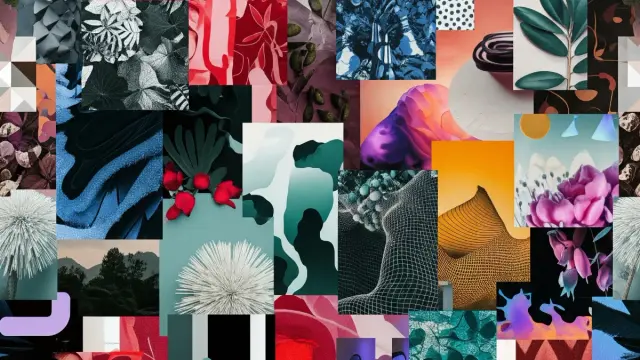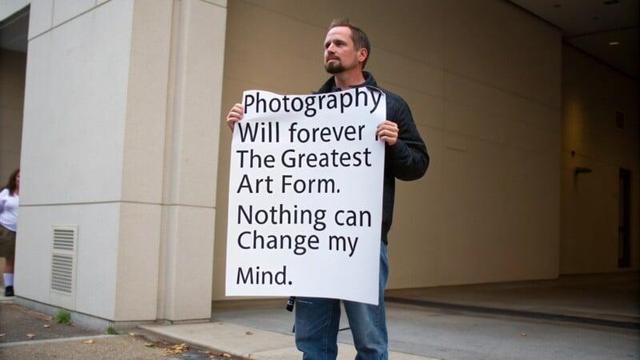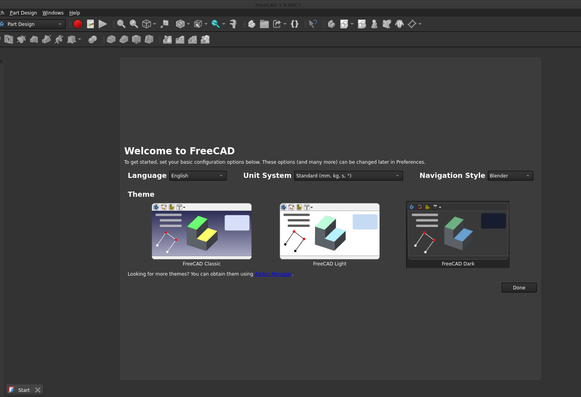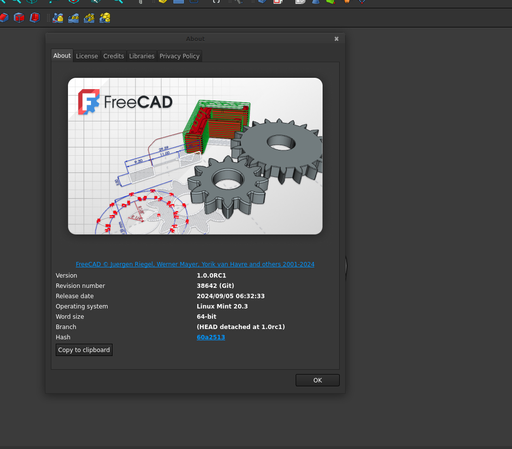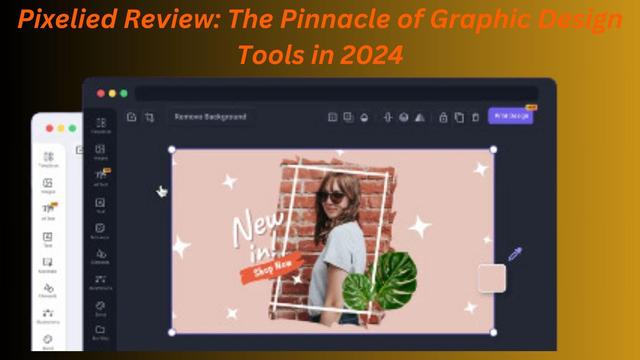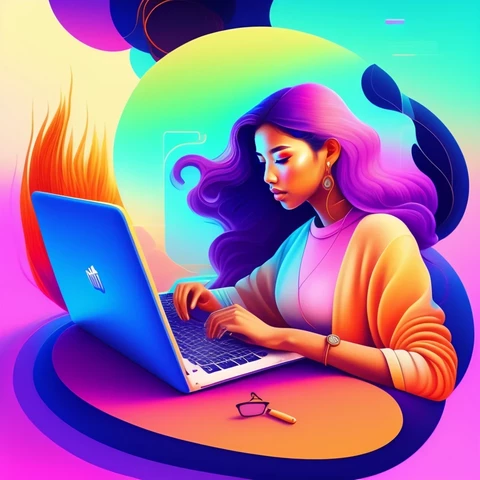Best Graphic Design Software 2025: Your Ultimate Guide to the Top 20 Tools
Picking the best graphic design software can feel like a monumental task, can’t it? You’re standing at a crossroads, with a dozen paths leading to different creative destinations. Which one is right for your journey in 2025? Will it be the industry giant everyone talks about, or perhaps a nimble newcomer making waves? This isn’t just about features; it’s about finding a partner for your creativity, a tool that empowers you to bring those brilliant ideas to life. If you’re searching for the best graphic design software to elevate your work, you’ve come to the right place.
The landscape of digital design is always shifting. New tools emerge, old favorites get powerful updates, and the way we create evolves. Think about how much AI has started to weave its way into creative workflows, or how crucial seamless collaboration has become. So, what truly makes a program the best graphic design software as we head into 2025? It’s a mix of power, usability, an eye on the future, and, of course, how well it fits your specific needs and budget.
This guide isn’t just another list. It’s a friendly chat, a detailed exploration of the top 20 design tools that are set to define and dominate 2025. We’ll look at everything from the undisputed champions to exciting challengers, free graphic design software, and specialized apps. We’ll uncover what makes each one tick, who it’s perfect for, and what new tricks they have up their sleeves for the coming year. Ready to find your perfect creative match? Let’s explore the options for the best graphic design software together.
The Titans: Industry-Standard Graphic Design Software
When people talk about professional graphic design software, a few names immediately spring to mind. These are the titans, the tools that have shaped industries and continue to be the benchmark for many. They are often part of a larger ecosystem, offering comprehensive solutions.
1. Adobe Photoshop: The Unrivaled Image Manipulation King
Adobe Photoshop is often the first name uttered when discussing the best graphic design software, especially for raster graphics. For decades, it has been the industry standard for photo editing, image manipulation, digital painting, and much more. If you can imagine it, you can probably create it in Photoshop.
- The 2025 Edge: Leading into 2025, Photoshop continues to impress with its ever-expanding AI Sensei features. Think advanced neural filters, mind-blowing content-aware fill capabilities, and AI-powered selection tools that save incredible amounts of time. Its integration with the Adobe Creative Cloud also means seamless workflows with other Adobe apps and cloud-based collaboration. Expect even more AI-driven automation and features that blur the lines between reality and digital artistry.
- Key Features:
- Comprehensive layer system
- Advanced selection and masking tools
- Extensive brushes and filters
- 3D design capabilities
- Content-Aware Fill and Generative Fill (AI)
- Video editing basics
- Huge library of plugins and resources
- Pros: Unmatched power for photo editing, industry standard, vast learning resources, continuous updates with cutting-edge features.
- Cons: Subscription model can be costly, steep learning curve for beginners, and can be resource-intensive.
- Pricing: Part of Adobe Creative Cloud (Photography plan from $9.99/month, or All Apps plan).
- Is it the best graphic design software for you?: Essential for photographers, digital artists, and any designer working heavily with raster images. If photo manipulation is your game, Photoshop is likely your best graphic design software choice.
2. Adobe Illustrator: The Vector Virtuoso
When your design needs to scale from a tiny icon to a massive billboard without losing quality, vector graphics are the answer, and Adobe Illustrator is the reigning champion in this domain. It’s the go-to for logo design, icon creation, typography, and complex illustrations. Many consider it the best graphic design software for vector-based work.
- The 2025 Edge: Illustrator in 2025 is pushing boundaries with AI-powered features like Text to Vector Graphic (beta), allowing you to generate editable vector graphics from simple text prompts. Enhanced collaboration tools, including share for review and in-app commenting, streamline teamwork. Its performance with complex vector paths continues to improve, making intricate designs smoother to handle.
- Key Features:
- Advanced vector drawing tools (Pen tool, Curvature tool)
- Artboards for managing multiple designs
- Powerful typography controls
- Pattern creation and image tracing
- Integration with Adobe Fonts and Stock
- 3D and materials (newer features)
- Pros: Industry-standard for vector graphics, scalable output, precise control, excellent integration with other Adobe apps.
- Cons: Subscription cost, can be complex for newcomers, some find its interface less intuitive than competitors for specific tasks.
- Pricing: Part of Adobe Creative Cloud (Single app from $22.99/month, or All Apps plan).
- Is it the best graphic design software for you?: Indispensable for logo designers, illustrators, and anyone creating resolution-independent graphics. If branding and detailed vector art are your focus, Illustrator is a strong contender for your best graphic design software.
3. Adobe InDesign: The Layout Maestro
For projects involving multi-page layouts – think magazines, brochures, eBooks, interactive PDFs – Adobe InDesign is the undisputed professional choice. It excels at combining text and graphics to create polished, print-ready, or digital documents. It’s often cited as the best graphic design software for publication design.
- The 2025 Edge: InDesign continues to enhance its digital publishing capabilities, with more robust tools for creating accessible documents and interactive online experiences. AI features are also seeping in, helping with smart text flow and layout suggestions. Its integration with Adobe Stock and Fonts, plus improved review and collaboration features, makes it a powerhouse for design teams working on extensive documents.
- Key Features:
- Precise typographic controls and text styling
- Master pages for consistent layouts
- Easy integration of Photoshop and Illustrator files
- Preflight checks for print and digital output
- Interactive PDF and EPUB creation
- Share for Review collaboration tools
- Pros: Industry standard for desktop publishing, powerful layout and typography tools, excellent for print and digital publications, robust integration.
- Cons: Subscription model, steep learning curve, primarily focused on layout rather than asset creation.
- Pricing: Part of Adobe Creative Cloud (Single app from $22.99/month, or All Apps plan).
- Is it the best graphic design software for you?: Essential for graphic designers working on books, magazines, flyers, interactive PDFs, and other layout-intensive projects. If your work involves significant text and image composition, InDesign is likely the best graphic design software for your needs.
The Collaborative Champions: Redefining Team Workflows
The way designers work is changing. Collaboration is no longer a luxury but a necessity. These tools have put real-time teamwork at their core, making them incredibly popular, especially for UI/UX and web design. Could one of these be the best graphic design software for your team?
4. Figma: The Web-Native Design Disruptor
Figma has revolutionized UI/UX design and has rapidly become a favorite for web designers, product teams, and even general graphic designers. Its browser-based nature and real-time collaboration features are game-changers. Many now consider Figma the best graphic design software for interface design and teamwork.
- The 2025 Edge: Figma continues its rapid innovation pace. Expect even more powerful prototyping features, enhanced developer handoff tools, and deeper integration of AI for tasks like component generation or layout suggestions. Its acquisition by Adobe (though facing regulatory scrutiny) signals potential for even broader capabilities, but its core strength remains its collaborative, web-first approach. FigJam, its whiteboarding tool, further enhances its collaborative ecosystem.
- Key Features:
- Real-time collaboration
- Vector editing tools optimized for UI design
- Interactive prototyping
- Component-based design system management
- Version history
- Extensive plugin ecosystem
- Cross-platform (browser-based, desktop apps)
- Pros: Exceptional collaboration, accessible from anywhere, free tier for individuals, powerful for UI/UX, strong community, and plugin support.
- Cons: Requires an internet connection for full functionality (though offline work is improving), can be less ideal for print design or complex photo manipulation compared to dedicated tools.
- Pricing: Free for up to 3 Figma and 3 FigJam files; Professional from $12 per editor/month (billed annually).
- Is it the best graphic design software for you?: A top choice for UI/UX designers, web designers, and teams needing seamless collaboration. If you’re designing digital products or working in a distributed team, Figma might just be your best graphic design software.
5. Canva: Design for Everyone, Everywhere
Canva has democratized design, making it accessible to non-designers and a quick, efficient tool for professionals creating social media graphics, presentations, and marketing materials. Its ease of use and vast template library are its hallmarks. For many, it’s the best graphic design software for beginners and for rapid content creation.
- The 2025 Edge: Canva is aggressively integrating AI across its platform with its “Magic Studio.” This includes AI image generation (Text to Image), AI-powered editing (Magic Edit, Magic Eraser), AI writing assistance, and even AI presentation generation. Its focus on team collaboration and brand kits makes it increasingly viable for businesses. Expect Canva to continue simplifying complex design tasks with AI and expanding its template offerings.
- Key Features:
- Drag-and-drop interface
- Huge library of templates, stock photos, videos, and graphics
- AI-powered design tools (Magic Studio)
- Real-time collaboration
- Brand Kit for maintaining brand consistency
- Social media scheduling (Canva Pro)
- Basic video editing
- Pros: Extremely easy to use, vast template library, free version is very capable, great for social media and marketing graphics, strong collaboration features.
- Cons: Less control than professional-grade software for complex designs, reliance on templates can sometimes lead to generic-looking output if not customized. Not ideal for intricate vector work or heavy photo retouching.
- Pricing: Free plan available; Canva Pro from $12.99/month for one person.
- Is it the best graphic design software for you?: Perfect for beginners, marketers, small business owners, and anyone needing to create good-looking graphics quickly without a steep learning curve. If speed and ease of use for common design tasks are paramount, Canva is a strong contender for the best graphic design software.
Powerful Alternatives: Value and Performance
Not everyone wants or needs to be tied to a subscription. These tools offer incredible power, often with a one-time purchase, making them a fantastic value and strong competitors in the search for the best graphic design software.
6. Affinity Designer 2: The Adobe Illustrator Challenger
Serif’s Affinity Designer has made serious waves as a robust, professional-grade vector graphics editor that directly competes with Adobe Illustrator, but with a one-time purchase. It’s lauded for its speed, power, and smooth workflow. Many professionals are switching or adding it to their toolkit, calling it one of the best graphic design software alternatives.
- The 2025 Edge: Version 2 brought a redesigned UI, non-destructive vector warp, shape builder tool, knife tool, and more. Leading into 2025, Affinity Designer continues to refine these features and enhance performance, particularly on both macOS and Windows. Its focus on a seamless experience across its suite (Photo, Publisher) and its one-time cost remain highly attractive.
- Key Features:
- Full-featured vector and raster workspaces (personas)
- Blazing fast performance, even with complex documents
- Unlimited artboards, advanced grids, and snapping
- Pixel persona for raster texture and retouching within vector designs
- Non-destructive editing features
- One-time purchase
- Pros: Incredible value (one-time cost), powerful feature set, fast performance, seamless switching between vector and raster tools, cross-platform (Windows, Mac, iPad).
- Cons: Smaller plugin ecosystem compared to Adobe, learning curve if migrating from Illustrator due to different terminology/workflows.
- Pricing: One-time purchase of around $69.99 (often on sale). Universal License for all Affinity apps on all platforms is also available.
- Is it the best graphic design software for you?: Excellent for illustrators, UI/UX designers, and anyone looking for a powerful, affordable alternative to Illustrator. If you want professional vector capabilities without a subscription, Affinity Designer is a top pick for the best graphic design software.
7. Affinity Photo 2: The Photoshop Contender
Affinity Photo 2 is Serif’s answer to Adobe Photoshop. It’s a comprehensive raster graphics editor packed with professional tools for photo editing, digital painting, and multi-layered compositions. It’s a serious contender for the title of best graphic design software for image editing, especially for those seeking a non-subscription model.
- The 2025 Edge: Version 2 introduced non-destructive RAW develop, live mesh warp, compound masks, and more. Affinity Photo continues to optimize its engine for speed and add features that rival Photoshop’s capabilities. Its commitment to non-destructive workflows and a one-time purchase price makes it increasingly popular.
- Key Features:
- Full RAW development
- HDR merging and focus stacking
- Advanced selection algorithms
- Liquify persona for distortions
- Extensive brush library and customization
- Non-destructive live filter layers
- PSD file compatibility
- Pros: One-time purchase, powerful feature set comparable to Photoshop, fast performance, non-destructive workflow, available on Windows, Mac, and iPad.
- Cons: Steeper learning curve for some, smaller community, and fewer third-party tutorials/plugins than Photoshop.
- Pricing: One-time purchase of around $69.99 (often on sale). Universal License available.
- Is it the best graphic design software for you?: A fantastic choice for photographers and designers who need professional photo editing capabilities without a subscription. If you’re looking for a powerful Photoshop alternative, Affinity Photo is a leading candidate for the best graphic design software.
8. Affinity Publisher 2: The InDesign Alternative
Completing the Affinity trinity, Affinity Publisher 2 challenges Adobe InDesign for desktop publishing and layout design. It allows users to create everything from simple brochures to complex books and magazines, all with a one-time fee. It’s a strong option when considering the best graphic design software for page layout.
- The 2025 Edge: Version 2 brought significant enhancements like book creation, notes, and place auto-flow. A standout feature is StudioLink, allowing you to instantly switch to the full toolsets of Affinity Photo and Designer if you own them, right within your Publisher document. This integrated workflow is a huge plus. Expect continued refinements in typography and digital export options.
- Key Features:
- Master pages, facing page spreads, grids, tables
- Text flow, advanced typography
- StudioLink for seamless integration with Affinity Photo and Designer
- Import/export of various file formats (including IDML)
- Book creation and management tools
- Pros: One-time purchase, powerful layout tools, innovative StudioLink integration, good performance, cross-platform.
- Cons: Still newer than InDesign, so some niche features might be less developed; smaller template and plugin market.
- Pricing: One-time purchase of around $69.99 (often on sale). Universal License available.
- Is it the best graphic design software for you?: Ideal for designers and publishers looking for an affordable, capable alternative to InDesign, especially if already invested in the Affinity ecosystem. This could be your best graphic design software for creating professional publications without ongoing costs.
9. CorelDRAW Graphics Suite 2024: The Veteran All-Rounder
CorelDRAW has a long history in the world of graphic design, particularly on Windows, though it’s also available for Mac. It’s a comprehensive suite offering tools for vector illustration, layout, photo editing (Photo-Paint), typography, and more. For many PC users, it has long been considered one of the best graphic design software packages.
- The 2025 Edge: CorelDRAW continues to evolve with a focus on productivity, collaboration, and AI-powered features. Recent versions have introduced dynamic asset management, enhanced collaboration workflows, and AI-assisted PowerTrace and image upsampling. Expect more cloud integration and tools tailored for specific industries like sign-making and apparel.
- Key Features:
- Robust vector illustration tools
- Page layout capabilities
- Corel PHOTO-PAINT for image editing
- Corel Font Manager
- AI-powered features
- Extensive file compatibility
- Collaboration tools
- Pros: Comprehensive suite of tools, strong vector capabilities, user-friendly for those familiar with it, available as a subscription or one-time purchase (though subscription is pushed).
- Cons: Can be perceived as less “industry standard” in some creative circles compared to Adobe, Mac version historically lagged, but is now more robust. The full suite can be expensive if purchased outright.
- Pricing: Subscription from $269/year or a one-time purchase of CorelDRAW Graphics Suite 2024 for around $549.
- Is it the best graphic design software for you?: A solid choice for Windows users, particularly in industries like manufacturing, signage, and apparel. If you need an all-in-one suite and prefer its workflow, CorelDRAW remains a powerful contender for the best graphic design software.
Specialized Tools: Nailing the Niche
Sometimes, the best graphic design software isn’t an all-in-one solution but a tool that excels at a specific task or on a particular platform. These specialized tools are beloved by many for their focused excellence.
10. Procreate: The iPad Illustration Powerhouse
If you’re an illustrator or digital painter and own an iPad, Procreate is almost a must-have. It’s an incredibly powerful and intuitive painting app designed specifically for the touch interface of the iPad and Apple Pencil. For digital artists on iOS, it’s often hailed as the best graphic design software.
- The 2025 Edge: Procreate continues to add professional-level features while maintaining its legendary ease of use. Recent updates have included 3D painting, improved text handling, and more animation features with Procreate Dreams. Expect further enhancements in brush engine technology, performance, and perhaps more AI-assisted tools that complement the artist’s workflow rather than replace it.
- Key Features:
- Vast library of brushes with deep customization
- Intuitive gesture controls
- High-resolution canvases
- Animation Assist and 3D painting
- Time-lapse recording of artwork creation
- PSD import/export
- Pros: Incredible value (one-time low cost), powerful and intuitive, optimized for iPad and Apple Pencil, excellent brush engine, vibrant community.
- Cons: iPad only, not a full graphic design suite (focused on illustration and painting).
- Pricing: One-time purchase of around $12.99. Procreate Dreams (animation app) is separate.
- Is it the best graphic design software for you?: A dream tool for illustrators, digital painters, and lettering artists using an iPad. If your work is primarily art-focused and you love the iPad experience, Procreate is an unbeatable choice and could be your best graphic design software for on-the-go creativity.
11. Sketch: The Mac-Native UI/UX Pioneer
Sketch was one of the first design tools to truly challenge Adobe’s dominance in the UI/UX space, particularly on macOS. It’s a vector-based editor known for its clean interface and focus on digital product design. For Mac-based UI designers, it’s long been a top pick for the best graphic design software.
- The 2025 Edge: While Figma has gained significant market share, Sketch remains a strong choice for Mac users. It continues to refine its collaborative features, improve prototyping capabilities, and ensure deep integration with macOS. Its focus on native performance and a polished Mac experience is a key differentiator. Expect continued enhancements for design systems and developer handoff.
- Key Features:
- Intuitive vector editing tools
- Symbols for reusable components
- Prototyping and artboard linking
- Collaboration tools for teams
- Extensive plugin library
- Mac-native application
- Pros: Clean, intuitive interface, strong for UI/UX design, good performance on Mac, robust plugin ecosystem, one-time purchase with optional renewals for updates.
- Cons: Mac only, collaboration features are good, but Figma is often seen as leading in real-time, subscription for continued updates after the first year.
- Pricing: Standard license from $120/year (includes updates and collaboration features).
- Is it the best graphic design software for you?: A great option for Mac-based UI/UX designers and teams who prefer a native app experience and a focused toolset. If you’re committed to the Apple ecosystem, Sketch is a strong contender for your best graphic design software.
The Open-Source Heroes: Free & Flexible Graphic Design Software
For those on a budget or who champion the open-source philosophy, these tools offer incredible power without costing a penny. They are community-driven and constantly evolving, making them viable options when searching for free graphic design software or even the overall best graphic design software for specific needs.
12. GIMP (GNU Image Manipulation Program): The Free Photoshop Alternative
GIMP has been the leading free, open-source raster graphics editor for many years. It offers a comprehensive set of tools for photo retouching, image composition, and image authoring. It’s often the first recommendation for free graphic design software that mimics Photoshop’s capabilities.
- The 2025 Edge: GIMP development continues, with ongoing work towards GIMP 3.0 which promises a GTK3 port (leading to better UI, especially on HiDPI displays) and non-destructive editing (a long-awaited feature). While development can be slower than commercial software, the commitment to providing a powerful free tool remains.
- Key Features:
- Photo enhancement and retouching tools
- Customizable interface
- Extensive plugin support
- Support for various file formats
- Digital painting tools
- Pros: Completely free and open-source, powerful feature set for a free tool, cross-platform (Windows, Mac, Linux), highly customizable.
- Cons: Can have a steeper learning curve, interface might feel dated to some (though improving), development cycles can be long. Non-destructive editing is still a work in progress for the main stable releases.
- Pricing: Free.
- Is it the best graphic design software for you?: Excellent for hobbyists, students, or professionals on a tight budget needing powerful image editing capabilities. If cost is a major factor, GIMP is a very strong candidate for the best graphic design software.
13. Krita: The Free Digital Painting Specialist
Krita is a free, open-source painting program designed for concept artists, illustrators, matte and texture artists, and the VFX industry. While GIMP is more of a general image editor, Krita is laser-focused on digital painting and illustration. For artists looking for free graphic design software specifically for painting, Krita is exceptional.
- The 2025 Edge: Krita receives frequent updates, often driven by community feedback and funding. Expect continued improvements to its brush engines, animation tools, and performance. Its dedication to providing professional-grade painting tools for free is its biggest strength. AI integration is also being explored by the community.
- Key Features:
- Excellent brush engines and stabilizers
- Wrap-around mode for seamless textures and patterns
- Brush resource manager
- Animation tools
- Layer management and color management
- PSD file support
- Pros: Free and open-source, specifically designed for digital painting, powerful brush customization, intuitive interface for artists, and active community.
- Cons: Less suited for general photo editing or layout work compared to GIMP or Photoshop.
- Pricing: Free (donations encouraged).
- Is it the best graphic design software for you?: A fantastic choice for digital painters, illustrators, and comic artists who want a professional-grade, free tool. If digital art is your passion, Krita could be your best graphic design software.
14. Inkscape: The Free Vector Graphics Powerhouse
Inkscape is the leading free, open-source vector graphics editor, often compared to Adobe Illustrator and CorelDRAW. It uses the SVG (Scalable Vector Graphics) file format as its native format and offers a rich set of features for creating illustrations, logos, diagrams, and more. It’s a top choice for free graphic design software for vector work.
- The 2025 Edge: Inkscape development is active, with recent versions bringing performance improvements, UI refinements, and new features like a revamped layers dialog and better SVG2 support. As an open-source project, it benefits from a dedicated global community contributing to its growth.
- Key Features:
- Comprehensive drawing tools (pencil, pen, calligraphy)
- Shape tools, Boolean operations, and path simplification
- Text tools, including text on path and flowing text
- Bitmap tracing
- Extensive file format support
- Extensible via add-ons
- Pros: Free and open-source, powerful vector editing capabilities, cross-platform (Windows, Mac, Linux), good SVG support.
- Cons: Learning curve can be steep for beginners, performance can sometimes lag with very complex files, UI might not feel as polished as commercial alternatives to some users.
- Pricing: Free.
- Is it the best graphic design software for you?: Ideal for students, hobbyists, and professionals looking for a capable, free vector graphics editor. If you need to create scalable graphics without paying for software, Inkscape is a strong contender for the best graphic design software.
Emerging & Web-Based Contenders: Fresh Choices for Modern Design
The world of design tools is always expanding. These contenders, many web-based, offer innovative approaches, ease of access, or specialized functionalities that make them worth considering in your quest for the best graphic design software.
15. Adobe Express (formerly Adobe Spark): Quick & Easy Design by Adobe
Adobe Express is Adobe’s answer to Canva, aimed at users who need to create social media graphics, flyers, logos, and short videos quickly and easily. It leverages Adobe’s creative technology in a simplified, template-driven interface. It’s a strong option when looking for user-friendly graphic design software for social media content.
- The 2025 Edge: Adobe is heavily investing in Express, integrating more AI features from Firefly (Adobe’s generative AI family), like text-to-image and text effects. Its integration with Creative Cloud libraries allows for smoother workflows for users already in the Adobe ecosystem. Expect more templates, more AI power, and tighter integration with other Adobe services.
- Key Features:
- Thousands of templates
- Access to Adobe Stock photos and Adobe Fonts
- AI-powered features (Adobe Firefly)
- Basic photo editing and animation tools
- Brand kits (premium feature)
- Collaboration features
- Pros: Easy to use, high-quality templates, good integration with Adobe ecosystem, free version is quite capable, AI features are promising.
- Cons: Less advanced than full Adobe Creative Cloud apps, premium features require a subscription.
- Pricing: Free plan available; Premium plan from $9.99/month (also included with many Creative Cloud plans).
- Is it the best graphic design software for you?: Great for marketers, small businesses, students, and anyone needing to create professional-looking content quickly, especially if already using other Adobe tools. This could be your best graphic design software for fast turnarounds.
16. Pixlr: Online Photo Editing Power
Pixlr offers a suite of online photo editing tools, ranging from the simple Pixlr X for quick edits to the more advanced Pixlr E, which offers Photoshop-like capabilities in your browser. It’s a convenient option for those who need to edit photos on the go without installing software. For accessible online editing, it’s a candidate for the best graphic design software.
- The 2025 Edge: Pixlr continues to enhance its AI-powered tools, including background removal, object removal, and auto-fix features. Its accessibility and tiered approach (from beginner to advanced) make it versatile. Expect more AI features and improved performance for its web-based editors.
- Key Features:
- Two editor modes: Pixlr X (easy) and Pixlr E (advanced)
- AI-powered tools (background remover, cutout, etc.)
- Layers, filters, and effects
- Template library
- Supports various image formats
- Pros: Web-based and accessible, free version available, good range of tools from basic to advanced, AI features are useful.
- Cons: Free version has ads, more advanced features require a subscription, performance can depend on internet connection and browser.
- Pricing: Free with ads; Premium from around $4.90/month.
- Is it the best graphic design software for you?: Good for users needing quick online photo edits, social media graphics, or a free/affordable Photoshop-like experience in the browser.
17. Photopea: The “Photoshop Online” Experience
Photopea has gained immense popularity for being a free, web-based editor that closely mimics the interface and functionality of Adobe Photoshop. It supports PSD, XCF, Sketch, XD, and CDR formats, making it incredibly versatile for those who need to open or edit files from various sources without owning the native software. It’s a remarkable piece of free graphic design software.
- The 2025 Edge: Photopea is continuously updated by its solo developer, often adding features requested by the community. Its strength lies in its comprehensive feature set available for free in a browser. Expect ongoing improvements in performance, format support, and tool refinement.
- Key Features:
- Photoshop-like interface and tools (layers, masks, smart objects, filters)
- Supports PSD, XCF, Sketch, XD, CDR, and other formats
- Runs in the browser, no installation needed
- Basic vector tools
- Pros: Free, incredibly similar to Photoshop, supports a wide range of file formats, no registration required for basic use.
- Cons: Can be slower with very large files, interface might be cluttered for beginners, relies on ads in the free version.
- Pricing: Free with ads; Premium (ad-free, more history steps) from $5/month.
- Is it the best graphic design software for you?: An excellent free alternative to Photoshop, especially if you need to work with PSD files and don’t have Photoshop. For many, it’s the best graphic design software when accessibility and cost are primary concerns.
18. Spline: 3D Design Made Easy and Collaborative
While not traditional 2D graphic design software, Spline is making waves by democratizing 3D design, making it accessible directly in the browser with real-time collaboration. As 3D elements become more prevalent in web design and marketing, tools like Spline are increasingly relevant. Could this be part of the future for the best graphic design software landscape?
- The 2025 Edge: Spline is rapidly evolving, adding more modeling tools, interactive features, physics, and game controls. Its ease of use for creating web-based 3D scenes and animations is its key appeal. Expect deeper integrations with web development workflows and more AI-assisted 3D creation.
- Key Features:
- Browser-based 3D modeling and animation
- Real-time collaboration
- Parametric objects and polygonal modeling
- Interactive experiences (events, states)
- Material and texture editing
- Export to web formats (including embed codes)
- Pros: Easy to learn for 3D, web-based and collaborative, free plan is generous, great for creating interactive web 3D graphics.
- Cons: Not as powerful as dedicated 3D software like Blender or Cinema 4D for complex modeling or rendering, still a relatively new tool.
- Pricing: Free plan available; Pro plan from $7/month per user (billed annually).
- Is it the best graphic design software for you?: Fantastic for web designers, UI/UX designers, and marketers looking to incorporate 3D elements and interactive experiences into their projects without a steep learning curve.
19. Corel Vector (formerly Gravit Designer): Versatile Web-Based Vector Tool
Gravit Designer, now Corel Vector, is a powerful and free (with a Pro option) vector design application available online and as installable desktop apps. It aims to provide a comprehensive set of vector tools suitable for everything from icon design and illustration to presentations and screen design. It’s a strong contender in the search for accessible vector design software.
- The 2025 Edge: As part of Corel, it benefits from larger company resources. Expect continued development of its feature set, cloud integration, and potentially tighter links with other Corel products. Its cross-platform nature and robust free offering remain key attractions.
- Key Features:
- Full-featured vector tools (pen, bézigon, shapes)
- Non-destructive effects and adjustments
- Cloud storage and collaboration (Pro)
- Import/export various formats (SVG, PDF, EPS, SKETCH)
- Pre-designed templates and assets
- Pros: Free version is very capable, cross-platform (web, Windows, Mac, Linux, ChromeOS), intuitive interface for many, good range of tools.
- Cons: Some advanced features are Pro-only, performance with extremely complex files might vary, being part of Corel might change its development trajectory for some users.
- Pricing: Free plan; Corel Vector Pro is part of CorelDRAW subscriptions or can be purchased separately (pricing varies).
- Is it the best graphic design software for you?: A great choice for users needing a flexible, cross-platform vector editor without the cost of Illustrator, especially if the free features meet their needs.
20. Lunacy: Free Sketch Alternative for Windows (and more)
Lunacy started as a free Sketch viewer and editor for Windows users who couldn’t access the Mac-only Sketch. It has since evolved into a full-fledged graphic design software with AI tools and built-in graphics. It’s a noteworthy option for those seeking free graphic design software with modern UI/UX capabilities.
- The 2025 Edge: Lunacy is rapidly adding features, including AI-powered tools like background remover, image upscaler, and text generator. Its full support for Sketch files and its growing library of integrated assets (icons, photos, illustrations) make it a convenient all-in-one solution for many.
- Key Features:
- Full .sketch file support (open, edit, save)
- Vector editing tools
- Built-in graphics library (icons, photos, illustrations)
- AI-powered tools
- Basic prototyping
- Available for Windows, macOS, and Linux
- Pros: Free, excellent Sketch compatibility, built-in assets save time, AI tools are a plus, and cross-platform.
- Cons: Still newer than established players, some advanced features found in Sketch or Figma might be missing or less polished.
- Pricing: Free.
- Is it the best graphic design software for you?: Excellent for Windows users who need to work with Sketch files, or anyone looking for a free, modern graphic design tool with built-in assets and AI features. This could be the best graphic design software for cross-team collaboration when Sketch files are involved.
AI in Design: The New Frontier and Choosing Your Best Graphic Design Software
You’ve probably noticed a recurring theme: Artificial Intelligence. AI is no longer a futuristic buzzword; it’s actively being integrated into the best graphic design software. From generative fill in Photoshop to text-to-image in Canva and Adobe Express, AI assists with tedious tasks, sparks new ideas, and even generates entire design elements.
As we look to 2025, expect AI to become even more deeply embedded. This doesn’t mean AI will replace designers. Instead, it will augment their abilities, acting as a powerful co-pilot. When choosing your best graphic design software, consider how well it incorporates AI in a way that genuinely enhances your workflow. Are you looking for AI-powered graphic design software specifically? Many of the tools listed are already heading that way.
How to Choose the Right and Best Graphic Design Software for You in 2025
So, with all these amazing options, how do you pick the one that’s truly the best graphic design software for your unique situation? It’s a personal decision, but here are some key questions to ask yourself:
- What’s your budget? Are you looking for free graphic design software, a one-time purchase, or are you comfortable with a subscription? This will immediately narrow down your choices.
- What’s your skill level? Are you a beginner needing something intuitive like Canva, or a seasoned pro ready to tackle the complexities of Photoshop or Illustrator? Some tools offer a gentler learning curve.
- What operating system do you use? Some software is platform-specific (like Sketch for Mac or Procreate for iPad), while others are cross-platform or web-based. This is a crucial factor for finding the best graphic design software for Windows/Mac/Linux.
- What kind of design work will you primarily do?
- Logo design and branding? Look at vector tools like Illustrator, Affinity Designer, Inkscape, or CorelDRAW. These are often considered the best graphic design software for logo design and branding.
- Photo editing and manipulation? Photoshop, Affinity Photo, GIMP, or Pixlr are strong choices.
- UI/UX design for web and apps? Figma, Sketch, Adobe XD (though its future is uncertain, Figma is leading here). These are top UI/UX design tools.
- Social media graphics and marketing materials? Canva, Adobe Express, Visme. Many find these to be the best graphic design software for social media content.
- Print layouts (magazines, brochures)? InDesign, Affinity Publisher.
- Illustration and digital painting? Procreate, Krita, Photoshop, Illustrator, Affinity Designer.
- Do you need to collaborate with others? If so, tools like Figma, Canva, and Adobe’s cloud-based apps with their strong collaborative features should be high on your list.
- What features are non-negotiable? Do you absolutely need advanced typography, specific file format support, or non-destructive editing? Make a list of your must-haves.
Thinking through these questions will guide you to the best graphic design software that not only meets your current needs but also supports your growth as a designer in 2025 and beyond. Many professionals use a combination of tools, leveraging each for its specific strengths. Perhaps your best graphic design software solution isn’t one tool, but a carefully selected toolkit.
The world of graphic design software is vibrant and constantly evolving. The best graphic design software for you is out there, waiting to help you create amazing things. Hopefully, this extensive review has given you the insights you need to make an informed choice and embark on your most creative year yet! Good luck!
Feel free to browse WE AND THE COLOR’s Graphic Design category for more mind-blowing content.
